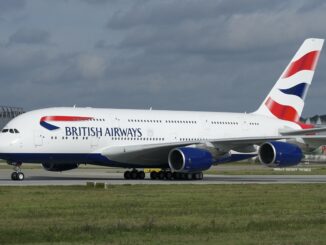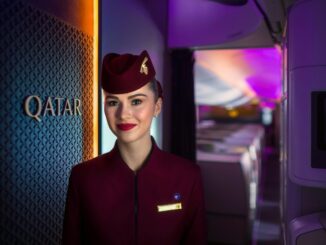If you’re off on your holidays or just travelling for an event, you’re probably excited about a couple of things. Some winter sunshine, maybe lazing on a beach somewhere, seeing family. But the chances are you’re not wiggling in your seat with unbridled anticipation of your airline dinner. You’re probably not eager to see what offerings come down the notably expensive train food trolley.
But if it’s not the destination, but the journey that matters…shouldn’t the food be nice?
Has travel food always been a dire affair, and if so, have we improved on it at all? Join us as we travel by land, sea, and sky to find out.
Railway food
Railway food might not be quite as bad as airline food, but it’s certainly overpriced. Unless you’re travelling in first class, crisps and biscuits and dry sandwiches are about all you can expect from train travel. And that’s if you’re lucky (or unlucky, depending on your view), as many services have axed their on-board trolley services.
Some rail services have said the lack of sustainability is the reason behind the end of on-board trolley services, though that’s probably just another way of saying a lack of business. There’s simply no reason to pay so much for a sandwich or packet of crisps on-board the train when the same, if not better, food exists a throwing distance from the train at a slightly lower price. Train stations are filled to the brim with all kinds of outlets, and it’s not just Burger King and WHSmith on offer now. For many of us, it’s no trouble to pack our own food and bring that with us or grab something on the way to the platform.
A first-class upgrade will see you get some snacks and drinks, and perhaps a complimentary menu on some trips. But as the Telegraph posits, the array of food often doesn’t come to much, and when you consider the price difference between a standard and a first-class ticket, you’re technically paying for the food you’re eating and then some. In fact, The Tab’s Annie Lord tried to make a profit from her £49.00 first-class ticket via eating and drinking the complementary food. Two hot drinks, six gin and tonics, one apple juice, one Pepsi, one cake, one bag of nuts, a bag of crisps, a piece of fruit, a salad, and a few snacks later, Annie made a profit of £5.65. A victory?
Ferry food
Sea-based travel isn’t as popular as travel by air, so maybe we don’t hear as much criticism for it. Or perhaps it is because space isn’t so much an issue on a ferry as it is on a plane or train – you tend to find a good array of restaurants and food services on a ferry. The quality isn’t so much an issue as the price, with many advocating taking your own food with you in order to avoid the ever-present expense of travel-based food.
Airline food
Time to address the elephant in the room. Or indeed, the questionable meat floating in a generic gravy waiting to be poked at with the disposable cutlery provided.
It seems crazy that we can talk to people face-to-face halfway around the world, but we still can’t rustle up a decent meal in the sky. We’ve not only sent men to the moon, we presumably fed them on the way there and back. How hard can it really be?
To be fair to airlines, they do need to cook a lot of meals in a very small space. The largest independent airline food provider makes 685,000 meals every day, says The Guardian, giving a whole new meaning to ‘fast food’. It’s not that airlines don’t have the capacity to serve pomegranate-glazed lamb or chilled prawns with an aioli tarragon sauce. In fact, back in the 1950s, before the dawn of flight classes, meals were ridiculously flashy, with charcuteries featuring in the aisles of the then-smaller planes.
But when it came about that all airlines had to charge the same for the same journey, the need to find new ways to make money rose. Splitting flight classes into first-class and economy and saving the good food as an incentive to upgrade to a more expensive ticket was one way to do this. Even with technology like sous-vide allowing for food to be vacuum-sealed and slow-cooked to keep it tasty even when cooked in the air, technological advancements in airline food don’t often filter down to economy class plates.
Essentially, it’s all down to selling. The huge variation between economy class food and first class is designed to encourage people to want to pay more and upgrade their seat. For those with frequent flyer points, many choose to spend their points on seat upgrades rather than a free ticket, and as Business Insider notes, a flight costs an airline more than fancy food does.
What we’re saying here is airline food, technically, isn’t awful by default. You just need to pay a lot more to get a ticket for a spacious seat and a larger drink than those tiny cans of single-mouthful Colas.







Be the first to comment